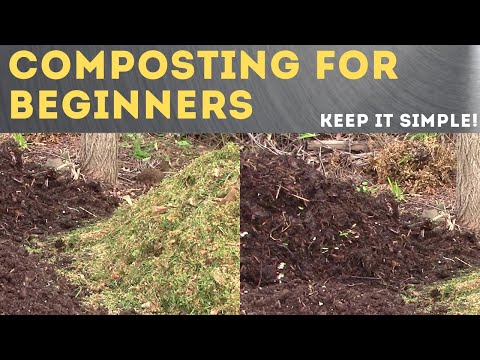If you have spent any amount of time growing crops, either in a small backyard garden or a large multi-acre farm, you probably know by now that producing bountiful, healthy returns is anything but easy, and doing so repeatedly can be maddeningly difficult.
Between irrigation, pest control and dozens of other variables that must be accounted for if you want that hard-earned bounty, taking care of your crops can be a full-time job. Never let it be said that it isn’t a thinking man’s game!

Among all these variables one of the most common that you’ll have to deal with year in and year out is soil fertility, specifically the lack thereof.
Soil fertility refers generally to the suitability of a given patch of land for growing a specific kind of crop, but more specifically refers to the amount of nutrients contained within the soil that plants will feed on in order to flourish.
On modern farms and in gardens across America you’ll see all sorts of big brand, over-the-counter fertilizers, both solid and liquid but, aside from being expensive, these industrial scale fertilizers will not always be around and can actually create more problems than they solve.
We are here today to help you develop your green thumb with our top 10 list of ways to make your soil fertile without the use of typical, chemical fertilizers.
Know Your Plants
Before we get into the list, it should be said that determining if soil is fertile or not is largely a matter of what you are trying to grow in it.
Though pretty much all plants, including common crops, will make use of the same basic nutrients many species have wildly differing requirements, and soil that will barely allow certain plants to grow at all may well produce a bumper crop with another type.
Trust me when I say that the “fire, ready, aim” method is bull; you could waste a ton of time, money, effort and more than a few sprouts or seedlings attempting to randomly guess which kind of fertilization method will yield soil that is amenable to your purposes.
For this reason, before you do anything else you should learn the specific requirements of the plants you plan on growing, and if you are a seasonal grower what plants you will grow next after the current crop is brought up.
This will allow you to better chart your moves and make informed decisions on what fertilization techniques will work best and at what time.
Like anything else we do as preppers, getting all the facts before you begin will usually save you a considerable amount of time and effort down the line.
Top 10 Ways to Make Fertile Soil
1. Rotate Your Crops
Most of us have at least heard of the concept of crop rotation even if we haven’t actually practiced it ourselves.
Crop rotation is the seasonal practice of growing different crops in a given plot of soil in a specific sequence. This is done with the purpose of reducing consumption of various nutrients in the soil. Essentially, you are giving your soil a break from the relentless demands of a given type of crop.
If you grow corn, for instance, you’re in and year out, a practice known as monocropping, pretty soon the soil will run out of the specific nutrients that corn requires, and you won’t be growing very good corn anymore, if at all.
What’s more, crop rotation prevents some other unhappy symptoms that can strike when you practice monocropping, such as the selective development of crop pests, weeds, and other aggravations.
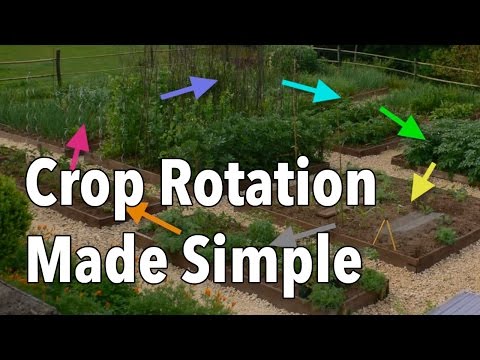
Basically, when you develop a highly specific set of circumstances in any fixed ecosystem, you put breeding pressure on organisms that survive in that specific set of circumstances, meaning you’ll be dealing with highly adapted weeds and insects that will thrive (i.e. make your life difficult) year after year.
Crop rotation disrupts this selective pressure and will make your life easier from season to season.
Whether you practice two, three or four field rotation, or some other hybridized system, you will help restore nutrients in the soil year in and year out, keeping it fertile and productive no matter what you are growing.
2. Compost
Composting is another method of fertilization that most of us have heard of even if we have never used it ourselves.
Compost is a mixture of organic ingredients, typically decomposing plant and food matter, which supplements nutrient levels in the soil and proves to be attractive to a great variety of beneficial organisms, including mycelium, worms and insects.
Composting is the practice of collecting matter suitable for compost and processing it in such a way to produce usable fertilizer for your garden or field.
Simple, individual composting is easily accomplished by gathering materials rich in nitrogen, things like leaves, leafy plant matter, grass, food scraps, fruit and vegetable skins and so forth, and matter that is rich in carbon, such as paper, cardboard, wood chips, old mulch, fruit and veggie stems and stalks, and so on.
Throwing all of this material in a big pile, wetting it with a hose and then allowing it to break down before it is periodically turned over, or aerated, will produce a large pile of usable compost in a couple of months. Any bugs, worms and fungus that show up in the interim will only help the process and the end product.
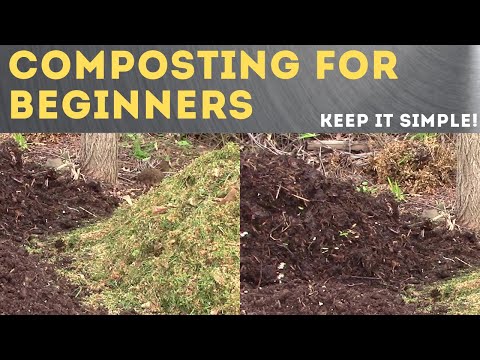
The science of composting is fascinating, and at the user level establishing and maintaining the correct chemical composition to produce rich, fertile compost can be tricky and requires practice.
Thankfully, today the process is well understood, and there is an abundance of information available in books and online they can allow you to establish a small compost barrel or a large compost pile on your property easily.
3. Ash
Wood ash is another potent but tragically underused fertilizer. Typical wood ash contains many nutrients that can be readily utilized by plants, or mixed into soil to replenish available levels, but it can also raise soil pH rapidly and so must be used with caution.
Although wood ash is most commonly thought of as a fertilizer for soil, it should be noted that nearly any plant-based ash can be used. Ashes from burned branches, twigs, grasses, straws and any other plant life is suitable, as is plain white, no-gloss paper.

However, one should avoid using ashes that result from the burning of any other material, including pressure treated lumber, glossy printed paper, coal, charcoal briquettes and other similar materials. Ashes resulting from the combustion of these materials will contain chemicals harmful to your plants and the soil.
But so long as you use ash that is properly sourced your soil and subsequently your plants will get a big boost of calcium oxide, phosphorus and potassium oxides, and magnesium oxide.
One last thing to note is that light, loose soils will easily be over calcified or made too acidic through the application of ash, and so it should be applied sparingly if at all with testing done at the appropriate times. Heavy soils that are rich in clay are eminently suitable for the application of ash.
4. Manure
Though the term manure properly describes any organic matter repurposed as organic fertilizer for the purposes of agriculture, most folks know manure by its most common, and effective, component: Animal dung!
Usually extremely unpleasant to handle and highly malodorous, manure is nonetheless an extremely important contributor to soil fertility, greatly increasing nitrogen levels as a primary mechanism and replenishing trace nutrients in soil through the establishment of beneficial bacteria and fungal colonies.
These microorganisms are then preyed upon by successively higher forms of life and so on and so forth, promoting a healthy, and nutritious, soil ecosystem.
Animal dung as manure, or as a component of manure, has been used for millennia, and so long as crop requirements are understood it is a reliable and effective method of recharging nutrient levels in the soil or providing nutrients directly to plants.
Typical manure known as FYM, or farmyard manure, typically consists of solids (or slurry, in the case of liquid animal waste) including urine, that is mixed with grass, hay, scrap animal feed or other organic components in a mixture.
The resulting mixture is then scattered over or sometimes injected directly into soil in order to fertilize it.
The use of animal dung as a component of manure for fertilization purposes on a homestead or farm can be an excellent, high-efficiency one-two punch as all kinds of animals’ droppings are suitable for the purpose.
Pigs, cows, chickens, sheep, goats, horses, rabbits, all kinds of birds and even bats generate copious quantities of dung that you can repurpose for fertilizing your soil.
It is worth noting, though, the different species droppings contain different quantities of vital plant nutrients, and understanding manure composition is imperative to establish the desired soil nutrient levels.
5. Get Some Chickens
Another great, livestock-centric way to improve soil fertility is getting a flock of chickens, be it a small backyard gang or a massive, free-roaming farm raised affair.
It is worth noting that while chicken droppings make for superb fertilizer in all kinds of soils on their own, just like we mentioned in the previous entry, keeping chickens will do far more than just generate this natural soil supplement.
As it turns out, chickens are something of a major predator in a backyard or garden environment. These high energy birds scrape and scratch and peck in the soil all day long looking for things to eat, and much of what they eat is harmful pests that can hurt your plants.
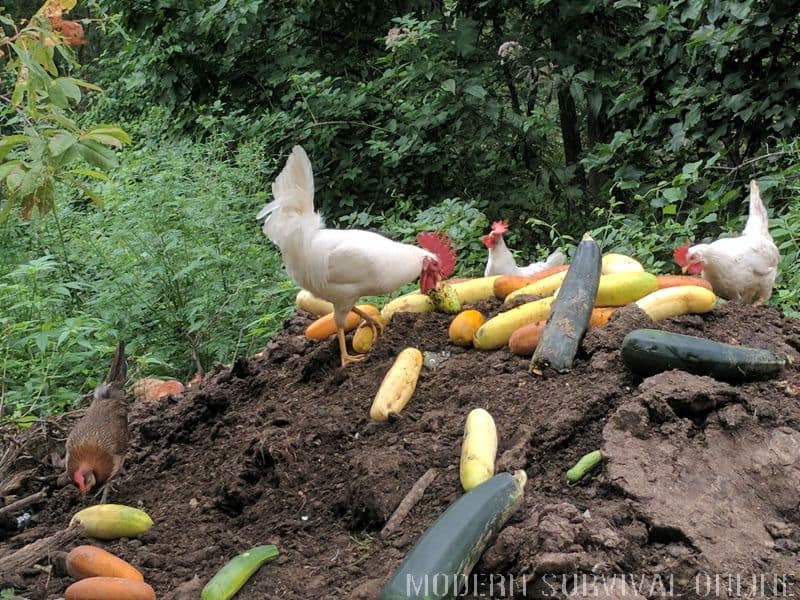
Speaking of plants, chickens are omnivorous and also eat weeds, sprouts and shoots that can compete with your crops for nutrients and space, thereby greatly reducing the pressure on your garden or acreage.
As a direct consequence of their comings and goings, moisture, and nutrients will have an easier time of making their way into the soil itself, and other life forms that live in the soil and promote a healthy ecosystem and trace nutrient regeneration will have an easier time of things.
So long as you are careful to not let your chickens overgraze a particular area they will only do good things for your soil and your crops.
6. Take it Easy on the Tilling
A common mistake that gardeners and amateur farmers both make is that of overtilling. This is understandable, as many popular sayings and aphorisms affirm that one should “till the land” if they want good returns, but unfortunately this process must be done with the utmost discretion and only when required as performing it too often can have the opposite effect.
Tilling is a process where the soil is essentially turned over at a certain depth, ideally bringing nutrients and microorganisms trapped below the compacted, nutrient-depleted surface up to the surface where new crops can access and make use of them.
But when you till too much, the result is actually pronounced soil compaction along with a host of other complications.
Among them, devastation of organisms in the soil, like helpful insects and particularly earthworms which serve to aerate soil with their tunnels and regenerate trace nutrients with their casings.
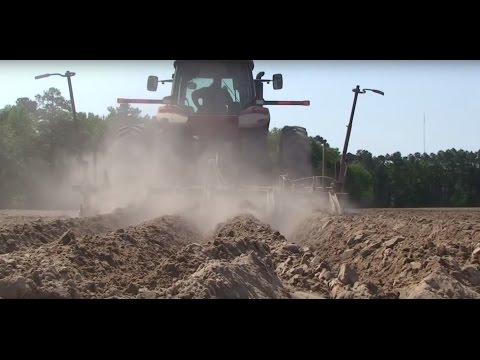
The solution is to simply till only when absolutely necessary, and be diligent about adding compost or any other soil components when required.
If you till, then till, then till again without implementing other soil management techniques the result will be nutrient-depleted, hard packed soil that will make it difficult or impossible to grow any worthwhile crops.
7. Rely on Plants with Deep Taproots
Anyone who is serious about growing a successful crop, or any kind of plant, knows that plants access nutrients and moisture in the soil through their tap roots, large roots that run deeply beneath the surface.
All plants utilize tap roots to one degree or another, but some species are renowned for how deeply they delve in search of nutrients.
These are the plants you can grow in soil that is considered nominally depleted, because their roots quest further for food. Including plants of this type in your crop rotation is a great way to recharge your soil between planting cycles.
Though these plants dig deeply for their own food, in the process they bring other nutrients locked deep in the soil closer to the surface, making them accessible to all the other plants nearby.
Compared to tilling or other physically “destructive” methods for doing the same thing, strategic use of plants with far reaching tap roots is an excellent and ecologically sensitive tactic for regenerating nutrient levels near the surface.
The trick, of course, is knowing which plant or crop fits the bill for your soil, region and season. A comprehensive listing of all species that could serve your purposes is beyond the confines of this article, but a quick search or inquiry on a gardening forum will easily produce a list of candidates for you.
8. Eliminate the Use of Chemicals as Much as Practical
It is the rare garden or working farm that does not rely on some chemicals in any capacity. Pesticides, fertilizers, stabilizers and all sorts of other laboratory trickery is employed in increasing numbers across America and throughout much of the world.
Though you can argue that science has produced for us tremendous returns when it comes to protecting our plants from pests, attaining spreadsheet perfect pH balances and ideal nutrition levels, there is a point at which those returns begin to diminish, and for the untrained and unlucky they can easily do more harm than good.
Pesticides in particular are increasingly in the spotlight of the public eye regarding the poorly understood, obfuscated and long-term effects that they have on soil and plants alike, and subsequently on the people and animals that ingest produce treated with such chemicals.
Many pesticides, even when deployed according to manufacturer specifications, are extremely hard on plants and soil alike, a very literal sort of chemotherapy that can weaken an ecosystem to the point of collapse in an effort to stave off what is viewed as a much bigger problem.
Before you resort to chemicals for pest control, look up holistic methods like the introduction of additional insect or avian life that will prey on the pests, or some other method to control or reduce existing populations. Before adding industrial chemical fertilizer to your soil, try any of the other methods listed on this list.
Though it is still possible to have a bad outcome, or eventually be forced to rely on powerhouse chemical additives for your garden or farm, you’ll find it is much easier to add a little more than to undo chemicals once they enter the soil.
9. Try Hügelkultur
Hügelkultur, meaning “hill culture” in German, is a clever agricultural technique that relies on burying a small, compact mound of woody plant matter before covering it with layers of compost to form a sort of dome or berm.
After a time, topsoil and fresh compost can be added to the outermost layer. In effect, the mound will help to fertilize nearby soil and even allow plants and crops to grow directly on it.
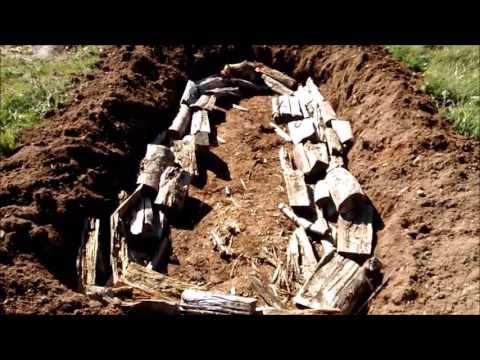
This is a highly adaptable technique that has been practiced in several European societies for hundreds of years, though the term we know it by today comes from a book published in the middle of the 20th century.
Though a traditional method, it is seeing major resurgence today especially among advocates of permaculture owing to its easy adaptation, excellent effectiveness and high degree of efficiency owing to its recycling of plant matter and other biomaterials typically generated by working homestead or farm.
The major deciding factor with this technique is whether or not you will plant immediately in the constructed mound or give it several months to compost.
There are advocates for both approaches, but generally crops with demanding nutrient requirements are best grown early in the life cycle of the mound, crops such as cucumbers, tomatoes, potatoes and pumpkins.
Notably, a properly constructed mound can produce usefully for crops upwards of 5 years, meaning the return on your labor investment is excellent. Once a mound is exhausted of its nutrients, the whole thing can be rebuilt.
10. Adjust Soil Texture and Composition
Your soil might have an adequate amount of nutrients in it for growing your chosen crops, but the texture of the soil might not be amenable for allowing the plant access to it.
In fact, it is generally a good idea to ensure that the texture, or composition, of your soil is ideal before setting off chasing a nutrient or pH balance standard that does not exist.
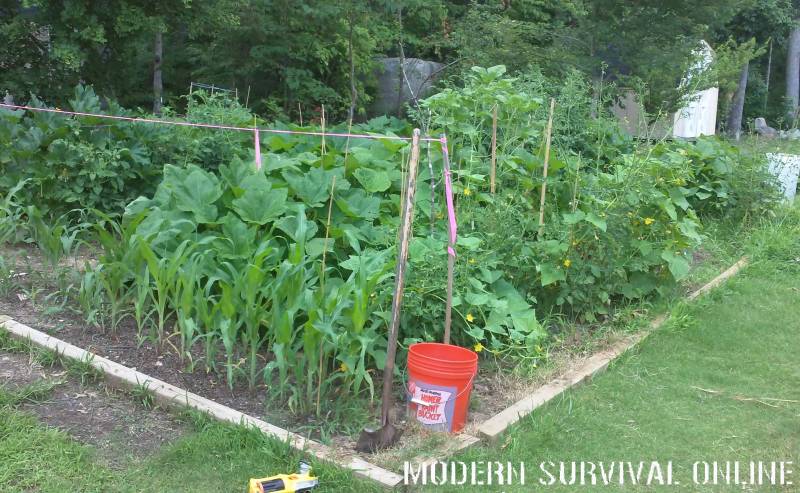
For instance, loose, loam soil tends to be extremely fertile, and is often seen as the standard for reliable, bountiful growth. This is because soil of this nature will typically hang on to nutrients more easily, all other factors being equal.
On the other hand, very sandy or clay-rich soil tends not to hold on to nutrients as well, and makes it more difficult for plants growing in them to access in the bargain. However, this determination is further complicated by how much water soil holds.
Those sandy soils I mentioned drain water quickly, loam and other loose, rich soil shows a propensity for modest drainage while retaining some moisture and clay-rich soils suck up water like a sponge.
What’s the solution to fixing soil composition? Generally, over a smaller area organic matter can be added to the soil, or various kinds of substrate to start steering the soil towards a texture more amenable to the crops you want to grow.
Sometimes planting a patch of low, ground covering plants can firm up the soil enough for a subsequent planting.
Conclusion
There you have it, 10 ways to easily improve your soil fertility no matter what you are growing and how big or small your patch.
Low fertility can doom your efforts before you ever start, so when you notice obvious signs of low nutrients, or your plants indicate they are not getting the food they need, it is time to act.
Gardeners, homesteaders and farmers alike are sure to benefit from the techniques and additives provided.
via Modernsurvival


